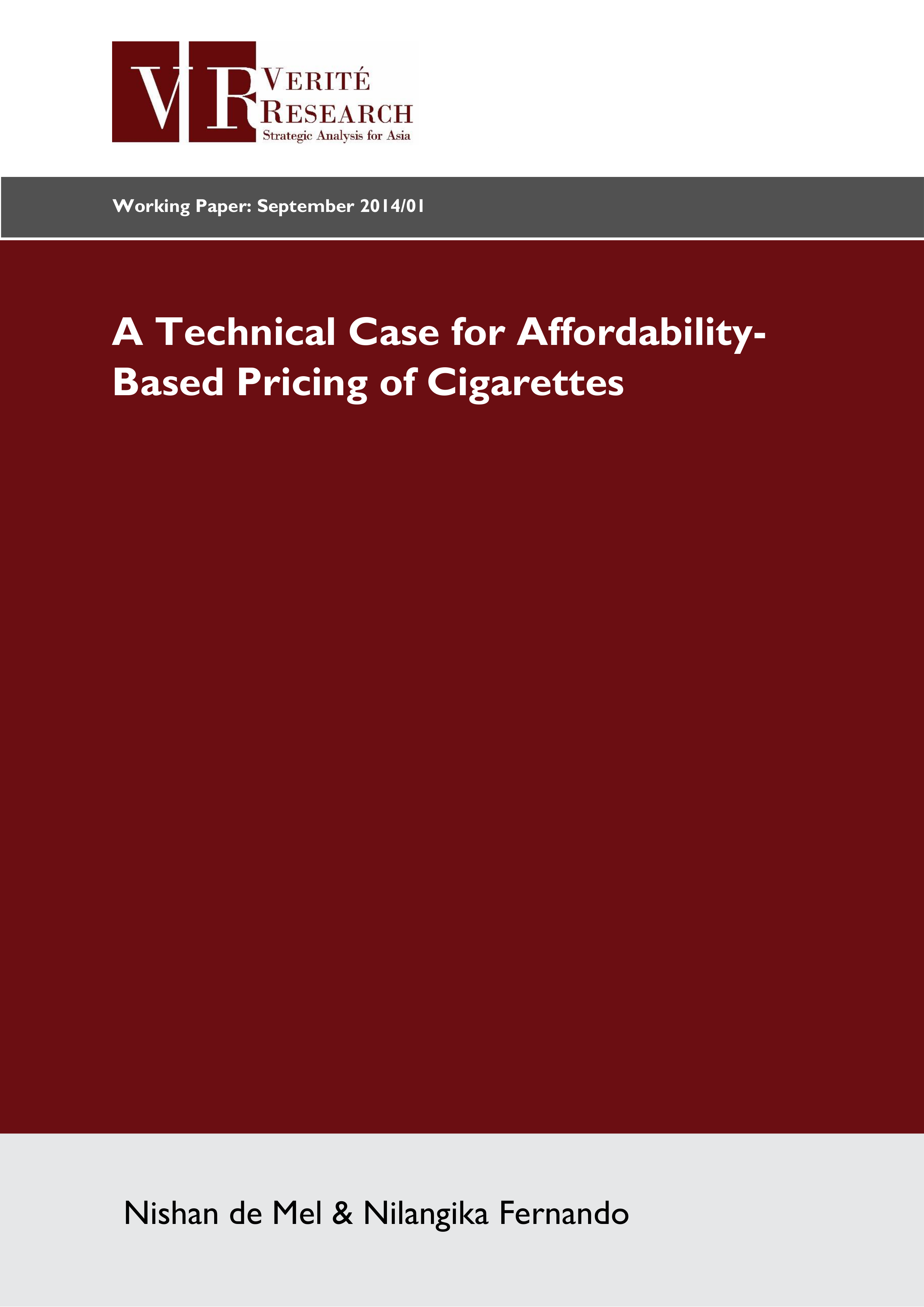
By 2014, tax revenue from cigarettes accounted for over 4.9% of total government revenue. However, thus far, Sri Lanka’s tax adjustments have been ad hoc, and driven by political and bureaucratic discretion rather than a logical, transparent, and systematic policy.
This paper aims to develop a framework that aligns three non-convergent interests: the social, industry, and fiscal, by (i) exploring the criteria by which the prices of cigarettes should be updated; (ii) developing a formula for benchmarking the price of the cigarette with the highest market share, using 20 years of price data from 1980–2000; and (iii) forming a coherent method for price differentials between the different length categories of cigarettes manufactured in Sri Lanka.
- Year2014
- Categories Economics Research Reports English
- Download Publication